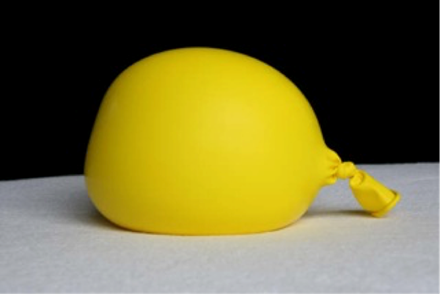What Causes Infant Plagiocephaly?
The main cause of Positional plagiocephaly, or plagiocephaly, comes from lying a baby on a flat surface with the head in the same position at a time when the skull bones are still soft.
It is generally considered that the skull of a baby remains soft and malleable/pliable for up to 12 months after the birth. Therefore babies skull bones can, through repeated contact with mattresses, car seats and other firm flat surfaces, become flattened. (Hence the term Flat Head Syndrome has become popular alternative to the medical name Positional Plagiocephaly.)
Plagiocephally & the Back to Sleep campaign
Prior to the very successful ‘Back to Sleep’ campaign which was launched some 20 years ago, the incidence of ‘sudden infant death’ was approaching 3000 baby deaths a year out of a birth rate of 700,000 in the U.K.
Since the campaign was introduced the incidence has dropped to less than 10% of that original figure. The results speak for themselves and every baby should be encouraged to sleep according to the guidelines of the Lullaby Trust for safety reasons.
However, there is an unexpected consequence to laying a baby onto the soft part of the skull when his/her bones are still so soft.
Always lying your baby on its back when putting your baby to sleep or on a activity mat is the best thing to do do to reduce risk of sudden infant death syndrome but it does mean that your baby is much more likely to develop positional plagiocephally.
When babies were placed on their side or front prior to the ‘back to sleep’ campaign Plagiocephaly or positional Plagiocephaly was extremely rare. In communities who don’t follow the laying babies on their back to sleep the incidence is also extremely low.
The following image is that of a water-filled balloon to demonstrate the effect of the weight of a baby’s head on the soft bones of the skull when placed on a flat surface.

You can clearly see that the weight of the water filled balloon results in a flattening of the balloon where it rests against the mattress.
The physics is the same in positional plagiocephaly in babies. Where they regularly rest their head they are quite likely to develop a flat spot. Up to 50% of all babies in the UK will have some degree of plagiocephaly.
Are certain babies more likely to develop Plagiocephaly?
It might be of interest to learn that this flattening or Plagiocephaly mostly happens to quiet or ‘good’ babies.
Babies which are regularly crying are not only moving their head from side to side, thereby taking the pressure off the repeated squashed part of the skull, but also will be more likely to be picked up by the comforting parents.
It is also noted that when a baby cries the pressure of the fluids rise within the skull thereby protecting the skull more from distortion of shape.
What are the downsides of a baby having Plagiocephaly?
Parents can be very worried depending on the severity of the flattening of the skull of their baby. They will often blame themselves for not noticing it sooner.
It is generally accepted that the health care professionals in the community have been extremely slow in early recognition of the asymmetry occurring in babies’ skulls.
Apart from the obvious visual impact on a baby’s skull asymmetry, research has been conducted and published to show that babies with an asymmetric skull (flat head syndrome/ plagiocephaly) do not perform as well at school either in the playground or the classroom. In severe cases there have been reports of visual disturbances.
Will plagiocephaly improve without treatment?
Parents are often told by their family doctor that plagiocephaly or flat head syndrome will self-correct when the child becomes older if nothing is done.
There are however too many examples of this not being the case for parents to feel reassured (I know from my own clinic that it is not true for many babies).
There are two parts to the developing skull in a baby. Firstly the top part, or cranial vault, is developed or ossified from membranes. These ossifying membranes allow a remodelling over a period of time unlike the lower part of the skull, called the cranial base. Here the skull is developed or ossified from cartilage which doesn’t readily permit remodelling.
However, as the baby’s hair grows it tends to cover up any flatness and the flat spot tends only to be noticed more at bath time.
It is obviously more of an issue for boys as they are more likely to want their heads to be shaved / very short as they move in to the teenage years.
Whilst some medical professionals (& the NHS) may not feel that positional plagiocephaly is a serious condition most parents realise the importance of how we look in relation to well being and confidence and where plagiocephaly is identified want to do what they can to help correct the condition.(As well as minimising any possible risk or brain or sight issues which have been associated with plagiocephaly).
Luckily treatment and prevention are relatively easy and inexpensive if diagnosed early.
Please see our Preventing Plagiocephaly page or our Treating Plagiocephaly page for advice.
